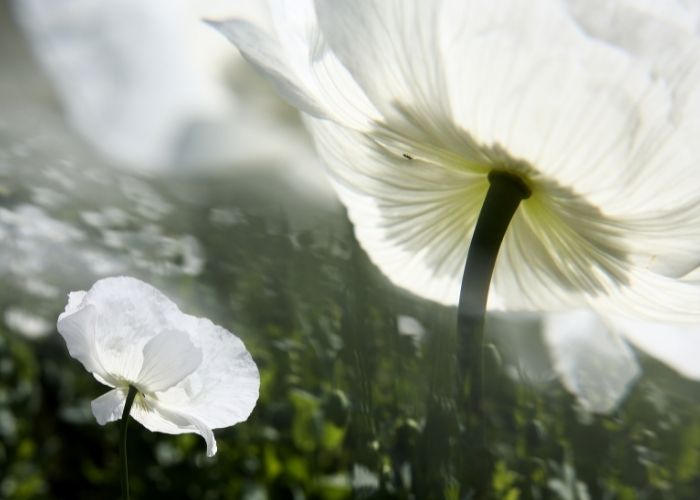MADRID – Spain is the world’s largest producer of opium. On more than 11,000 hectares, notably in Castilla-La Mancha, but also in the provinces of Valladolid, Burgos, and Palencia along the banks of the Tagus, grow the ‘royal poppies’ that form the basis for this.
According to the newspaper El País, more visitors from Portugal, France, and Italy are now coming to those regions in search of white poppies. More specifically opium pavers, whose fruit is the base for the production of opium and its derivatives.
In Spain, the company Alcaliber (in 2018 sold to the British investment fund GHO) is set up by the Ministry of Health to be the only one in Spain to legally produce these drugs that are for pain relief in hospitals.
Álvaro Gallardo, spokesman for the Guardia Civil in Toledo, said in the newspaper El País that the number of young foreigners visiting Spain during May in their search for white poppies has increased. They travel the roads where poppies grow on the roadside and point out that the great, secret fields are nearby.
Opium vampires
For example, many of those white poppies can be found along the banks of the Tagus. Although it is a medicinal plant, its dangerous juice has already killed two people. The tourists who are looking are called “opium vampires” by the locals. What they get from the poppies is called cheap heroin.
Flowering poppies hard to hide
The location of 528 legal poppy fields in Spain is secret, but in the spring it will be illegal to hide those 11,000 hectares full of visible, white poppies, according to the Ministry of Health. This attracts a sort of pilgrimage at this time of year from consumers from all over Europe who are looking for this flower.
The poppy growers ask questions from El País to the grower. However, several attacks on the fields have been confirmed, despite extensive patrols by private security services.
84 grams of opium in an Actimel bottle
In 2011, the Guardia Civil arrested two Italians who had sneaked into an Alcaliber plantation in Polán. Two men, ages 24 and 26, had about 84 grams of opium in an Actimel bottle and another from Coca-Cola. Their harvest had a street value of almost €3,400 on the black market. Wearing knee pads, they crawled through the flowers unseen. Consequently, they were committed for up to a year and 11 months for drug trafficking and theft. In 2014, a Portuguese man was caught with 81 grams of opium at a poppy farm in El Carpio de Tajo.
Increase in opium tourists
The raids are only a minor annoyance to the opium giant. However, for the last 10 years, the Guardia Civil has noticed an increase in the number of people who travel in vans or caravans to the banks of the Tagus in their search for the poppy. According to the Guardia Civil, they come for the sole purpose of consuming these substances. The wind scatters the poppy seeds, so there are also many wild plants in the province that you can’t even come and get the medicine for. In addition, those wildflowers are a clear indication that the large fields are nearby.
The activity of young tourists in most cases is settled with arrests. However, in this case, it ended with the discovery of 2 corpses due to an overdose during consumption.
“Dangerous Phenomenon”
García Caballero of the Guardia Civil says it clearly: “Opium tourism is a dangerous phenomenon. Dangerous because young people cannot control the dose of morphine they take”. He points out that morphine can cause breathing problems, especially in high doses when combined with alcohol.
“These people are at risk of getting side effects, including death from respiratory failure. They think it’s good because it’s a natural product. However, Opium is dangerous,” García Caballero states once again.


